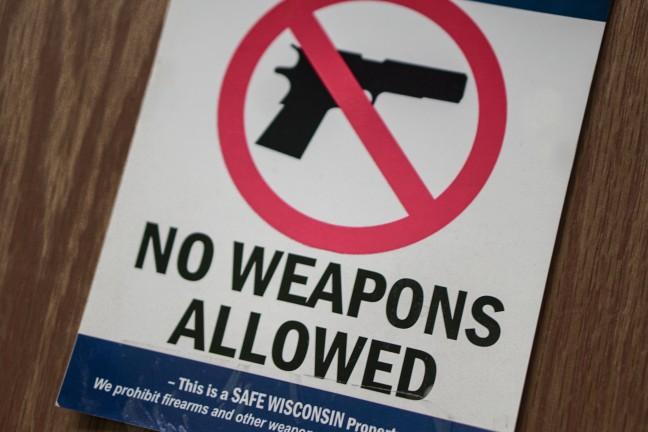A documentary about Columbine. Newspaper reports of mass shootings. Neo-Nazi and white supremacist propaganda. Threats against ex-partners and spouses. Painstakingly-detailed manifestos posted on social media. Google searches about suicide, spiraling into a fascination with bump stocks and where to purchase them cheaply.
These were the “red flags” missed before several of last year’s most horrifying mass shootings. With the benefit of hindsight, the content embedded in the computers and social media of those who commit violence often seems exactly that — a bright red flag.
A red flag law, proposed by Wisconsin Attorney General Josh Kaul, aims to address these flags. It would allow family members and law enforcement to petition a judge, temporarily removing firearms from an individual who is a possible threat. Despite intense disagreement about the limits of the second amendment, red flag laws and universal background checks, among other proposed restrictions, are supported by a significant majority of Americans.
Red flag laws, which have been passed in thirteen states, are supported by several local law enforcement officials. Iterations of red flag laws — sometimes called an “extreme risk protection order” — have even evoked conditional support from the National Rifle Association, despite their rampant efforts to fight red flag legislation in numerous states.
When Kaul proposed “red flag” legislation at his inauguration, the push back from gun rights advocates was immediate. Concerns about due process were voiced, and with good reason. Establishing a fair and transparent process for removing firearms in a potentially dangerous situation is vital to an equitable implementation of law.
A recent column published by The Badger Herald highlighted several of these concerns, deeming Kaul’s proposal “honorable” but speculative, mirroring conservative concerns over how, and why, guns could be removed from individuals.
Improved gun control policy desperately needed after Florida high school shooting
“It is often suggested that ‘red flag’ laws can be used to protect an individual from themselves,” the article noted. “In 2016, there were 44,965 suicides — 51 percent of which were by firearm. This is obviously alarming. But this also means 49 percent of suicides were by another means.”
Later, the article implored readers to seek help outside of Red flag laws: “If you have any legitimate reason to believe that someone you know is going to harm themselves, consider talking to them — be a friend. Have them contact the National Suicide Prevention Lifeline at 1-800-273-8255. Government coercion is certainly not the best option.”
This line of reasoning is concerning for several reasons. Certainly, seeking help for a friend is imperative if they are about to harm themselves or others. But suggesting suicidal individuals or their friends should avoid seeking other mental health resources at the potential cost of temporary gun dispossession is absurdly out of touch. If removing firearms from someone will save a life — or save lives, plural — then it is absolutely the best option. Period.
Beyond the worrying national statistics for firearm-assisted suicides, red flag laws address another concern of police officers — the possession of firearms by those convicted of domestic violence. According to data reported by Everytown For Gun Safety, 54 percent of mass shootings since 2009 were “… related to domestic or family violence.”
As mass shootings continue, Wisconsin, national gun control debates remain polarized
Despite federal restrictions on gun ownership by convicted domestic abusers, the ban does not apply to those charged with misdemeanor domestic violence. This loophole, among other vulnerabilities in the system, allowed the Sutherland Springs shooter to possess several firearms and kill 26 churchgoers in Texas last year.
Yet, opposition to red flag laws rarely addresses the statistical relationships between gun ownership and violence. Despite the structured process to remove firearms — a petition before a judge, the temporary removal of firearms if a warrant is granted and a hearing two weeks later — the supposed infringement on due process persists as critics’ primary concern.
This conundrum is what my roommate refers to as the “Person of Interest” problem — how do you act upon knowledge that somebody might be a danger to others, if they haven’t committed a crime yet? How do you remove someone from an unhealthy situation if they’re not in one now?
I am no constitutional scholar. I cannot speak to the legality of gun ownership in the context of red flag laws. But I, among many other Americans, subscribe to the “better safe than sorry” mentality. Often used by proponents of open and concealed carry, this mentality suggests, above all else, we should aim to protect ourselves and our loved ones from harm.
Statistically, the path forward is clear: remove guns from at-risk individuals and reduce potential rates of suicide and gun violence in a household. Remove a firearm erroneously, and the price is a wait of fourteen days. In a world of “better safe than sorry,” is that really too much to ask?
Julia Brunson ([email protected]) is a senior majoring in history.














